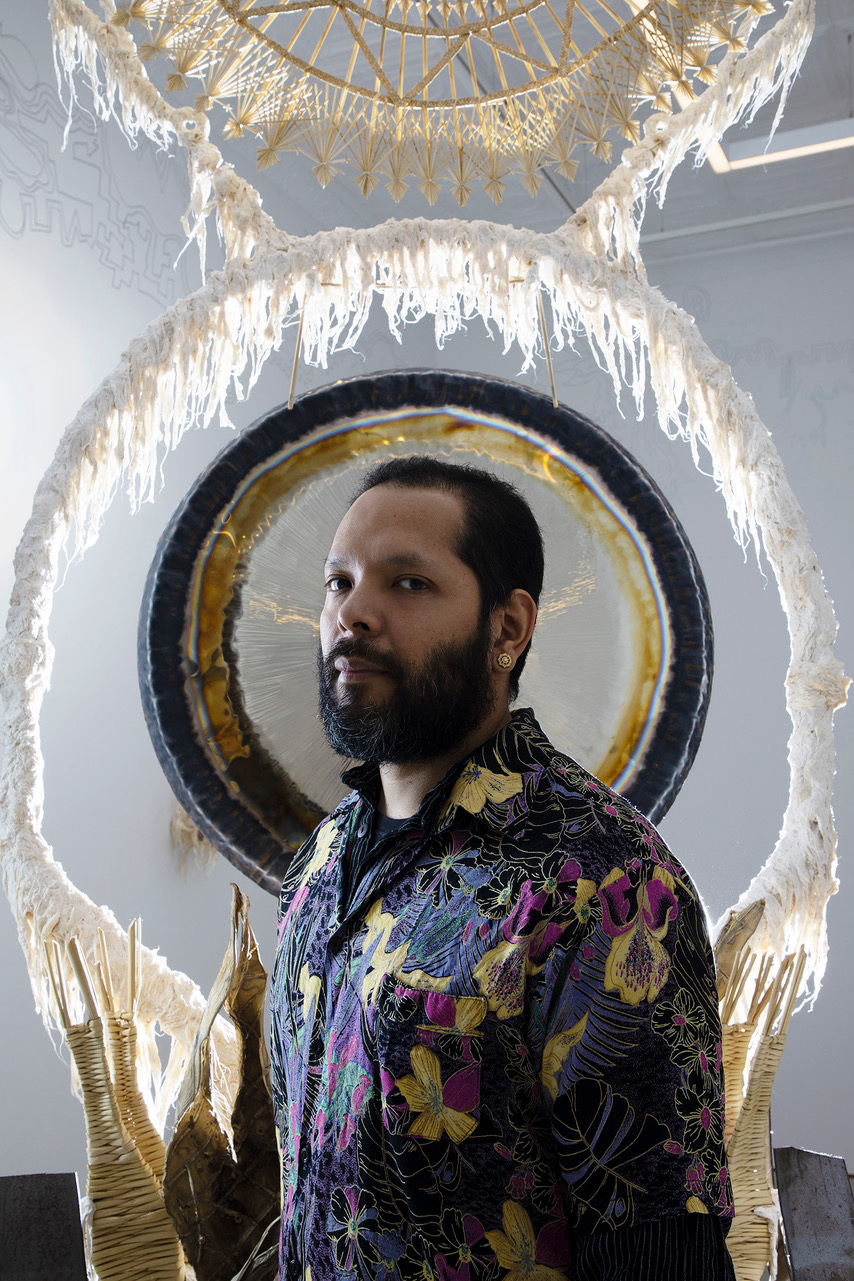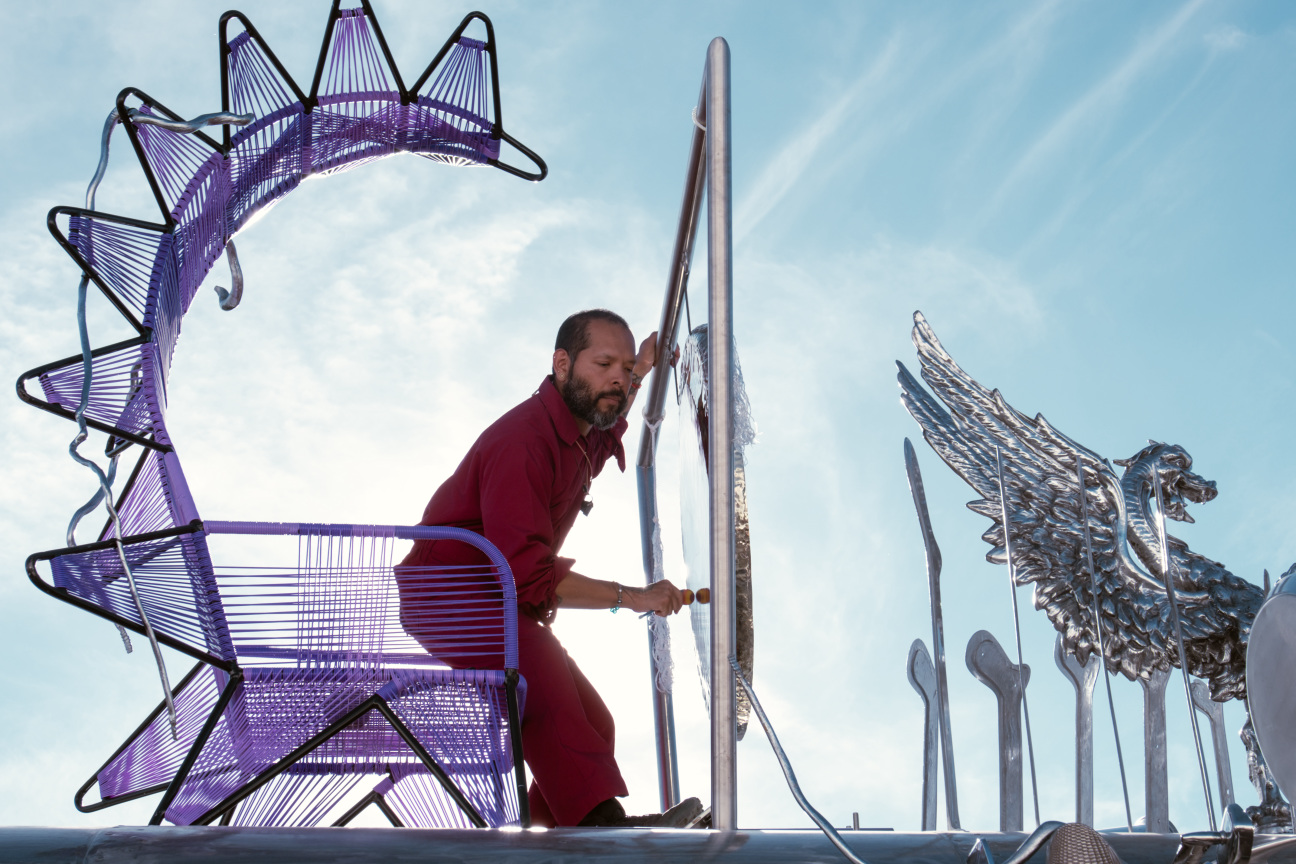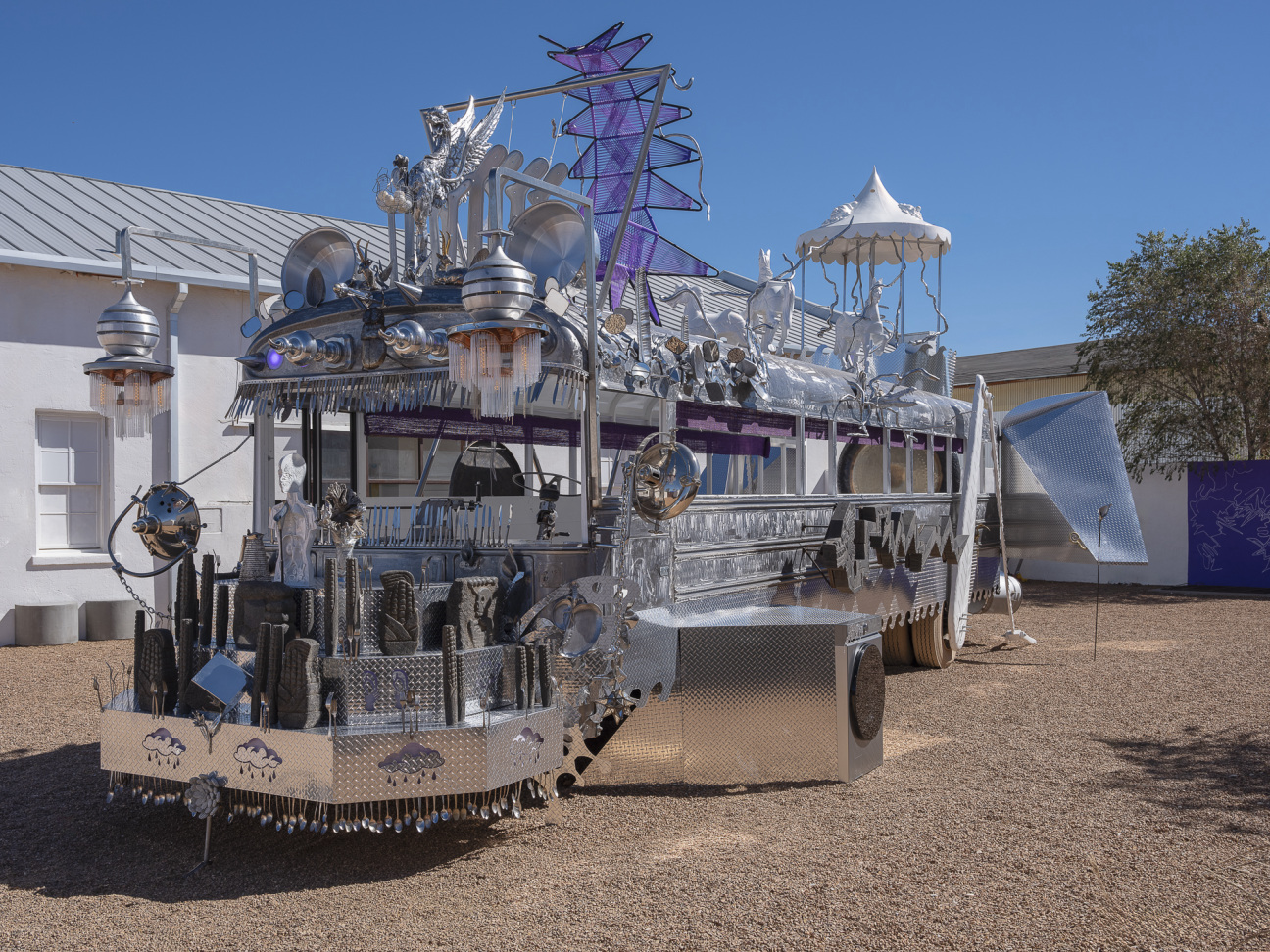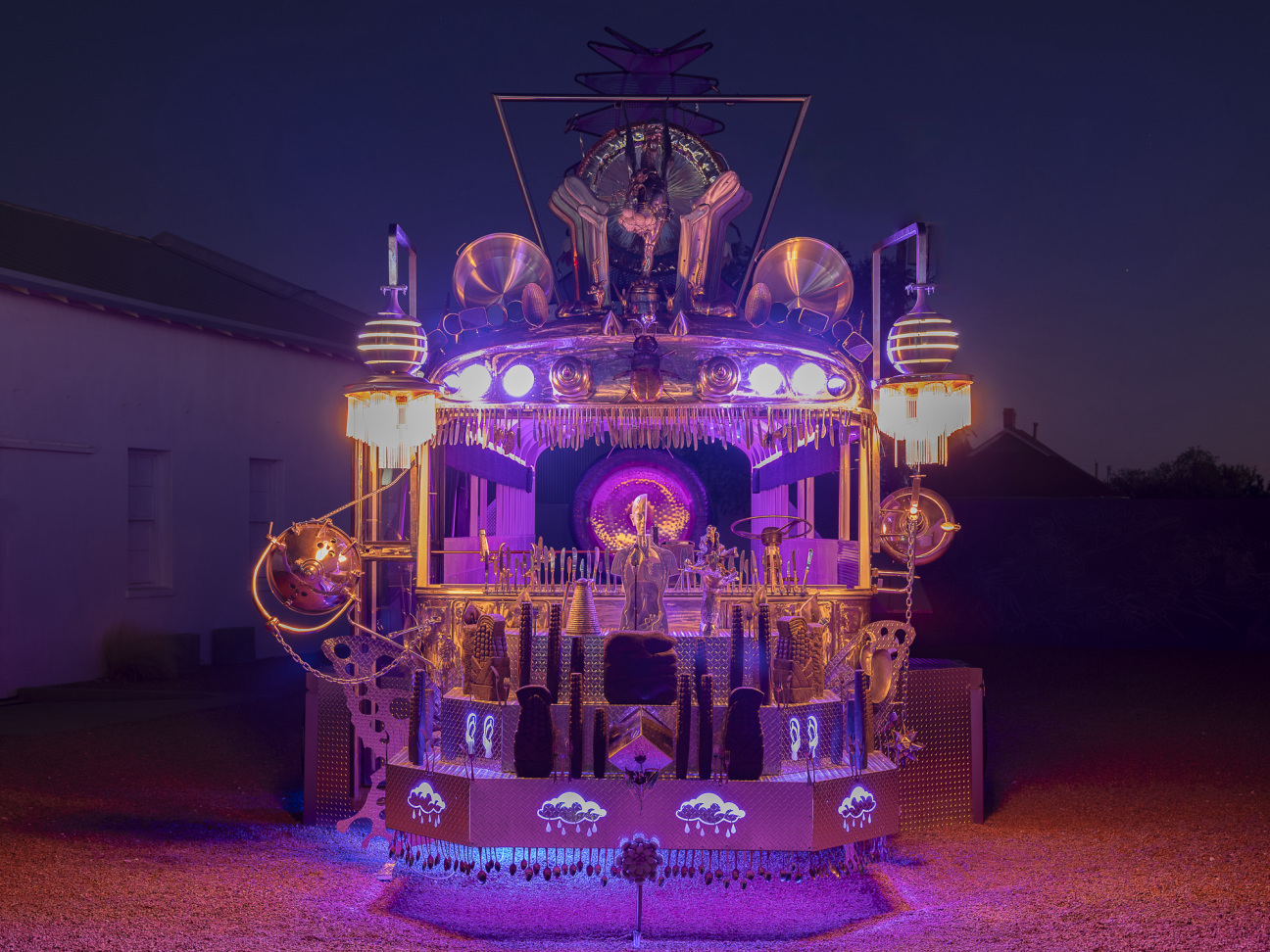
When he was eight years old, Guadalupe Maravilla fled the civil war in El Salvador and traveled, unaccompanied, across Guatemala and Mexico to the border town of Tijuana, where he entered the United States as an undocumented immigrant.
Years later, Maravilla—then a graduate student in his 30s—was diagnosed with advanced colon cancer, a condition he partly attributes to the trauma of immigration and the stress of surviving undocumented in the U.S. As part of his long journey back to health, the artist, now 47, turned to healing practices inherited from Indigenous cultures—including his own Mayan ancestors. The ritual he found himself drawn to most was the sound bath.

This December, the artist will have been cancer-free for 10 years. Since discovering the therapeutic powers of sound, Maravilla tells me he has learned to perform healing ceremonies for other people living with cancer, as well as people recovering from the trauma of forced migration. “Sound is medicine itself,” he observes.
Last weekend, Maravilla was in Marfa celebrating the unveiling of Mariposa Relámpago. Over the next several months, this large-scale sculpture will embark on a multi-institution tour of Texas. The work’s journey begins at Ballroom Marfa, before progressing to The Contemporary Austin in April, and finally, later next year, to the Blaffer Art Museum in Houston. Texas is in need of Maravilla’s healing abilities: Recently, its draconian Republican governor, Greg Abbott, called the situation at the Mexico-Texas border an “invasion.”

Maravilla describes Mariposa Relámpago—a customized school bus, bedazzled with over 600 silver, chrome, aluminum, and polished-steel objects gathered primarily from El Salvador and Mexico—as “a vibrational healing instrument.” Hanging from the bus are four large metal gongs, the biggest five feet across, which Maravilla and two collaborators activated during the Marfa opening. The sound of these gongs, played at full volume with fluffy mallets and rubber-tipped wands, is like nothing I’ve heard before.
Imagine the roar of a jet engine, or the rush of a train, and then filter it through a spacey sci-fi synthesizer. Layered frequencies build and recede, with high howls and deep roars, buzzsaw notes and bass rumbles, all rushing together into a sonic cataclysm that you feel as much as hear.
Lying on the floor of the bus, which is undergirded with beams designed to transmit the gongs’ vibrations to the body, I was transported: not along the route of Maravilla’s journey through Central America, but into an extraterrestrial space of pure sensation, of transcendent physical release. But this was not, Maravilla stressed, a healing ceremony, which would ordinarily be conducted in a closed session, without cameras or drinks or casual chatter. In March, he will convene several shamans and healers to lead a ceremony in Marfa to mark the exhibition’s closing.

Mariposa Relámpago was born of a commission by the ICA Boston, where it debuted in May. Its journey to realization, however, was not without obstacles. Maravilla originally located a suitable bus in El Salvador which he planned to drive to Mexico City to be transformed by his team. He even enlisted a shaman to check the bus’s energy, a lawyer to arrange its export, and a driver who was prepared for the long journey. Ultimately, the bus’s checkered past came to light; it was stolen from the U.S., and was wanted as evidence by the FBI. After months of legal wrangling, Maravilla returned the bus to the Salvadoran church he had purchased it from, sourcing a similar vehicle in Michoacán, Mexico, instead.
Mariposa Relámpago translates from Spanish as “lightning butterfly.” Its name is inspired by the flocks of monarch butterflies that migrate north each spring from Michoacán. On the side of the bus is one of several sculptures that Maravilla commissioned, carved from volcanic rock: a lightning bolt with the head of a serpent and butterfly wings. The snake, Maravilla explains, is a symbol of medical aid not just in the West, but in many Indigenous cultures, including the Maya civilization.

While Mariposa Relámpago may have the glitz of a shiny fairground attraction, an ornamented lowrider, or an eccentric piece of yard art, every element has been chosen for its symbolism or personal significance. “Nothing is random,” insists Maravilla. Dangling silverware, bought from Mexican markets, references the practice of communal eating, an important accompaniment to a healing ceremony. A dragon holds a basket of eggs made from white onyx—a crystal believed to repel negative energy. Giant grasshopper legs allude to the disruptive “leap” of migration. A children’s carousel, a lucky find, provides the ancestors with somewhere to play during the ceremony. “Healing can be very challenging,” says Maravilla, “but it’s important for it also to have a playful element.”
Of course, the artist cannot remain in Marfa for the entirety of Mariposa Relámpago’s exhibition; its gongs will go silent when he leaves. So most visitors will have to imagine the effects of its vibrational healing with the help of an audio recording. I ask Maravilla if this disconnect bothers him. “Not at all,” he replies. “My number one sculptural inspiration has always been the Maya, my ancestors.” The Maya’s intricate stone carvings and structures, he explains, served precise ceremonial purposes, many of which may be entirely inaccessible to us today. He understands that the same could be said of his own work. “This is my Trojan Horse for healing,” says Maravilla. “People get so excited about how it looks, and then they’re like, ‘Wait a minute, it does something else.’”
"Mariposa Relámpago" is on view through March 16, 2024 at Ballroom Marfa in Marfa, TX.










 in your life?
in your life?

